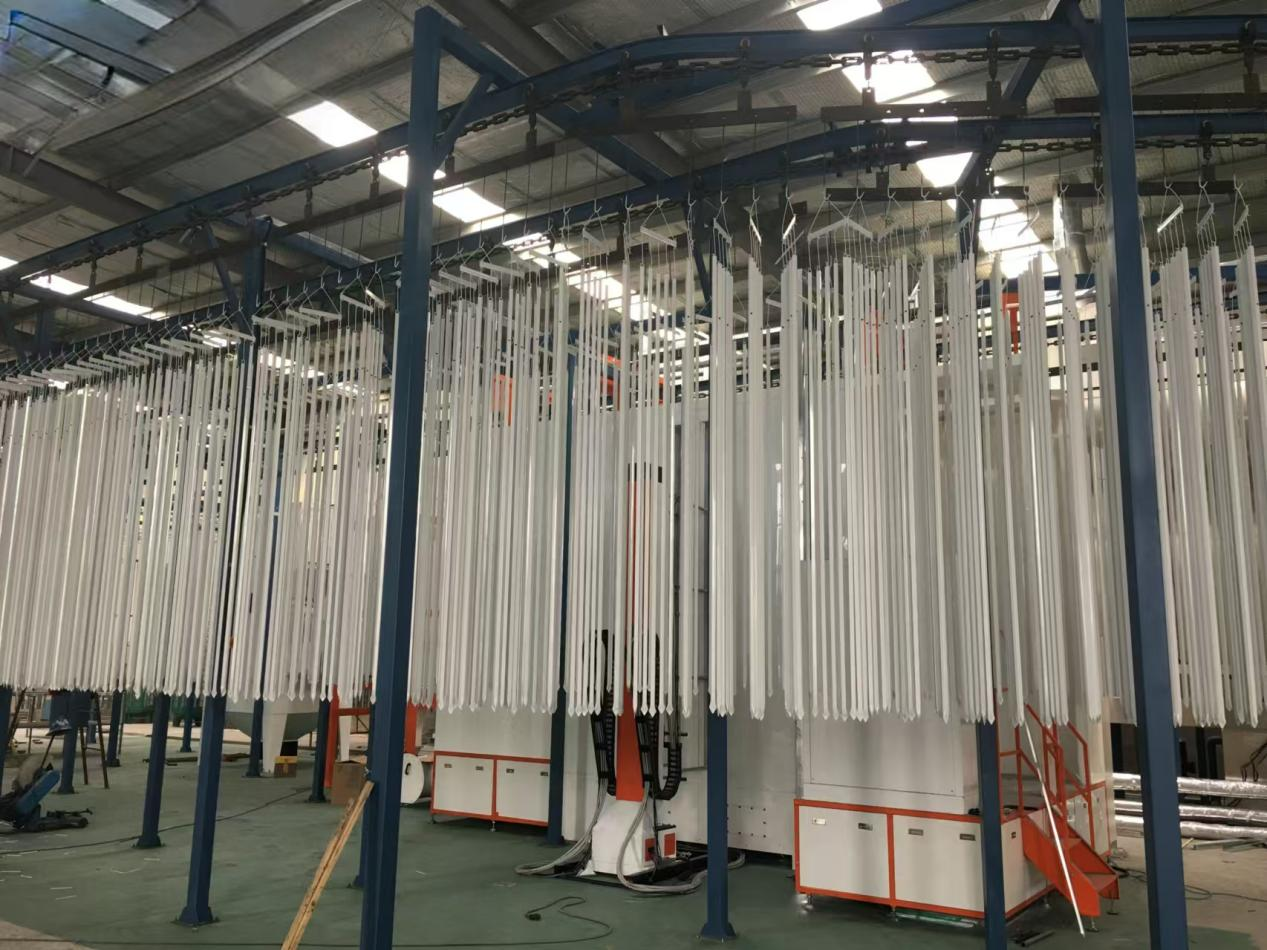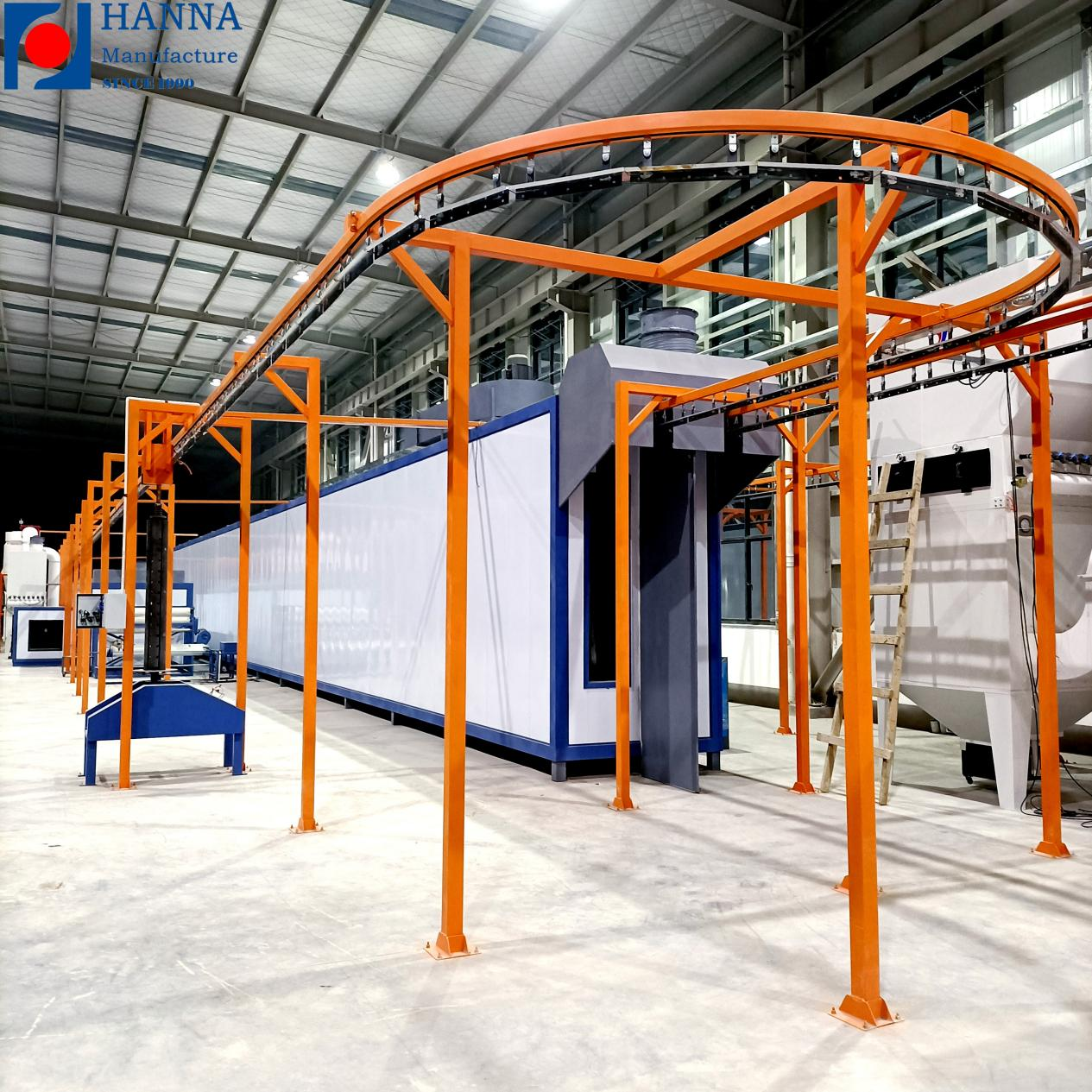What is the Difference Between Powder Coating and Paint Coating?
Surface coating is a critical process in modern manufacturing, enhancing both the aesthetic appeal and durability of products across industries like automotive, furniture, and appliances. Two of the most widely used coating methods are powder coating and paint coating, each offering distinct benefits and challenges. For manufacturers and businesses, selecting the appropriate coating method can significantly impact product quality, cost, and environmental compliance.
This article provides a comprehensive comparison of powder coating and paint coating, drawing insights from industry-leading sources to address key differences. As a trusted provider of advanced coating solutions, Hebei Hanna Technology Co., Ltd. (Hinah) specializes in delivering state-of-the-art powder coating lines, paint line systems, and coating equipment tailored to meet diverse industrial needs.
What is Powder Coating?
Powder coating is a dry finishing process where a fine powder, composed of pigments, resins, and additives such as acrylic, polyester, epoxy, or polyurethane, is electrostatically applied to a surface, typically metal. The charged powder particles adhere to the grounded substrate, forming a uniform layer. The coated object is then cured in a powder coating curing oven at high temperatures (typically above 400°F or 200°C), melting the powder into a durable, smooth finish.
This process is widely used for appliances, automotive parts, and outdoor furniture due to its robust and environmentally friendly properties. Hinah’s powder coating systems, including automatic powder coating lines and powder coating booths, ensure precise application and consistent results for industrial applications.

What is Paint Coating?
Paint coating, also known as wet painting, involves applying a liquid mixture of pigments, solvents, and binders to a surface using brushes, rollers, or spray painting equipment. The paint dries or cures through evaporation or chemical reactions, leaving a thin, protective film. Paint coating is versatile, applicable to a wide range of surfaces, including metal, wood, and plastic, and is valued for its extensive color options and ease of application.
It is commonly used in automotive finishing, furniture, and decorative applications. Hinah’s paint line systems, including automatic painting lines and painting robots, deliver high-precision finishes for complex surfaces, ensuring aesthetic appeal and durability.
How Do the Application Processes Differ?
The application processes for powder coating and paint coating differ significantly in their approach, equipment, and operational requirements.
Powder Coating Process: The powder coating process begins with surface preparation, typically involving cleaning and degreasing to remove contaminants like oil or dirt. For enhanced adhesion, surfaces may undergo mechanical pretreatment, such as sandblasting, to create an anchor pattern. The powder is applied using an electrostatic spray gun, which imparts a charge to the powder particles, allowing them to adhere to the grounded substrate.
This electrostatic attraction ensures uniform coverage, even on complex shapes. After application, the coated object is cured in a powder coating curing oven, melting the powder into a smooth, durable film. Hinah’s powder coating lines, such as automatic powder coating lines, incorporate advanced electrostatic coating equipment and energy-efficient curing ovens for optimal results.
Paint Coating Process: Paint coating also requires thorough surface preparation to ensure adhesion, but the application is more flexible. Liquid paint can be applied manually (via brushes or rollers) or through automated spray painting systems, such as painting robots or automatic spray painting machines.
Unlike powder coating, paint relies on solvents to maintain its liquid state, which evaporate during drying or curing, sometimes requiring heat in a paint curing oven (typically below 150°C). This process is less energy-intensive than powder coating but may result in uneven finishes, drips, or bubbles, particularly on intricate surfaces. Hinah’s paint line systems minimize imperfections and ensure uniform application.

What Are the Key Advantages of Each Method?
Each coating method offers distinct advantages, making them suitable for different applications.
Powder Coating Advantages:
Durability: Powder coating produces a thicker, more resilient finish (typically 60-100 microns) that resists chipping, scratching, and corrosion, making it ideal for outdoor equipment and automotive parts.
Environmental Friendliness: As a solvent-free process, powder coating emits minimal volatile organic compounds (VOCs), aligning with environmental regulations. Overspray can be collected and reused in powder coating booths, reducing waste.
Uniformity: The electrostatic application ensures even coverage, including edges and complex geometries, resulting in a consistent finish.
Efficiency: Powder coating often requires only a single coat, reducing labor and material costs compared to multi-coat paint coatings.
Paint Coating Advantages:
Versatility: Paint coating can be applied to a wide range of surfaces, including metal, wood, and plastic, making it suitable for diverse applications like furniture and high-end automotive finishes.
Color Flexibility: Liquid paint offers nearly limitless color options, with on-site mixing for precise hues and effects like metallic or pearlescent finishes.
Ease of Repair: Damaged paint coatings can be easily touched up or repainted, unlike powder coatings, which often require recoating the entire part.
Lower Initial Costs: Paint coating equipment, such as automatic spray painting machines, is generally less expensive, making it ideal for small-scale production or repair work.
What Are the Limitations of Each Method?
Both methods have limitations that manufacturers must consider when selecting a coating solution.
Powder Coating Limitations:
Limited Color Options: While powder coating offers thousands of colors, it is less flexible than paint, and custom colors may require special manufacturing runs, increasing lead time.
High Initial Investment: Powder coating lines, including powder coating equipment and curing ovens, require significant upfront costs, which may be prohibitive for small operations.
Complex Repairs: Damaged powder coatings are difficult to repair, often necessitating complete recoating, which can increase costs.
Surface Limitations: Powder coating is less effective on non-conductive surfaces like certain plastics unless a conductive pre-coat is applied.
Paint Coating Limitations:
Environmental Impact: Liquid paints contain solvents that release VOCs, contributing to air pollution and health risks. Proper ventilation and compliance with environmental regulations are essential.
Durability Concerns: Paint coatings are thinner (typically 30 microns) and more prone to chipping, cracking, or fading, especially under harsh conditions.
Application Challenges: Achieving a uniform paint coating on complex surfaces can be difficult, with risks of drips, bubbles, or uneven finishes.
Maintenance Needs: Paint coatings require more frequent maintenance and repainting compared to the long-lasting powder coating.
Comparison Table: Powder Coating vs. Paint Coating
Aspect | Powder Coating | Paint Coating |
Application Method | Electrostatic spray followed by curing in a powder coating curing oven | Spray painting, brushing, or rolling, with drying or curing in a paint curing oven |
Finish Thickness | 60-100 microns, highly durable | ~30 microns, less durable |
Durability | Resistant to chipping, scratching, and corrosion | Prone to chipping, cracking, and fading |
Environmental Impact | Minimal VOCs, overspray reusable | High VOCs, solvent-based, less eco-friendly |
Color Options | Limited compared to paint, custom colors costly | Extensive color options, easy to mix |
Cost | Higher initial powder coating equipment cost, lower long-term maintenance | Lower initial paint line system cost, higher maintenance |
Surface Versatility | Best for metal, limited on non-conductive surfaces | Suitable for metal, wood, plastic, and more |
Equipment | Requires electrostatic coating equipment, powder coating booths, curing ovens | Uses automatic spray painting machines, painting robots, or manual tools |
Why Choose Hinah for Coating Solutions?
Hebei Hanna Technology Co., Ltd. (Hinah) is a leading powder coating plant manufacturer and powder coating equipment supplier, offering a wide range of solutions, including automatic powder coating lines, powder coating booths, and powder coating curing ovens. With a focus on innovation and quality, Hinah provides industrial powder coating equipment and industrial painting equipment designed to meet the demands of modern manufacturing. Whether you need a powder coating system or a paint line system, Hinah delivers customized solutions to optimize your production process.
For businesses seeking reliable coating equipment, Hinah offers competitive powder coating machine prices and ensures cost-effective solutions without compromising quality.
Conclusion
Choosing between powder coating and paint coating depends on your specific application, budget, and environmental considerations. Powder coating excels in durability, environmental friendliness, and uniform finishes, making it ideal for industrial applications like automotive parts and outdoor equipment.
Paint coating, with its versatility, color options, and lower initial costs, is better suited for decorative finishes and non-metal surfaces. Hebei Hanna Technology Co., Ltd. (Hinah) provides advanced powder coating lines, paint line systems, and coating equipment to help manufacturers achieve superior results.


 fr
fr  de
de  es
es  it
it  ru
ru  pt
pt  ar
ar  th
th  pl
pl  ro
ro 

.webp)